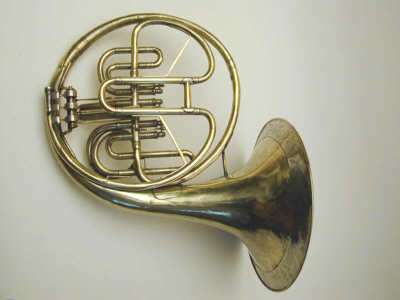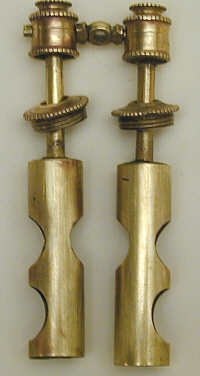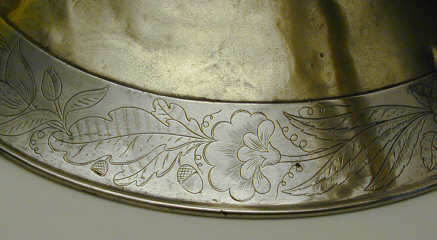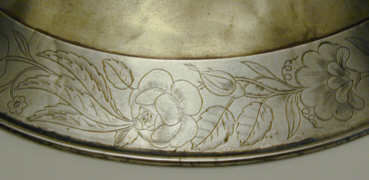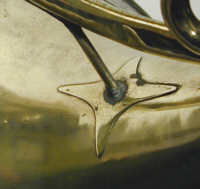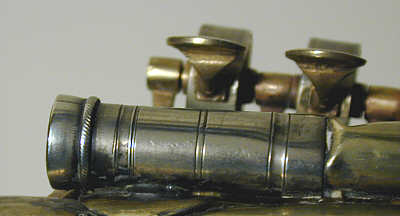This is a very nice example of an
early Vienna horn design and closely resembles the
wrap attributed to Joseph Riedl. Riedl's
Vienna horn wrap of 1830 was very symetrical in design
of the valve slides, as is this model by an anonymous
maker and the
Cidrich Vienna horn in this collection.
The date of manufacture is estimated
to be ca. 1840 based on
the relatively small bore, the large "zipper" seams in
the tubing throughout, the similarity to the Riedl
horns and other stylistic characteristics. It is in
"Old Austrian High Pitch," a'= 460.8 Hz.) with an
F-crook (110 cm.) which was common in Austro-Hungarian
Imperial and Royal ("K.u.K.") military and civilian
bands. It can be lowered to modern standard
pitch (a' = 440 Hz.) with an E crook (136 cm.).
A most unusual aspect of this horn is
that it is built to be
played using the right hand to operate the valves with
the bell facing left. This is opposite to the
standard orientation and is very uncommon. In most
cases horns have been configured this way to
accommodate an individual player who, because of some
disability, is unable to use the left hand for the
valves. The collection of the Metropolitan Museum of
Art includes a right-handed horn. An early nineteenth
century horn tutor by Franz Joseph Fröhlich
(1780-1862) describes the left- and right-hand holding
in reference to playing duos with bells facing toward
each other instead of pointing in the same direction.
